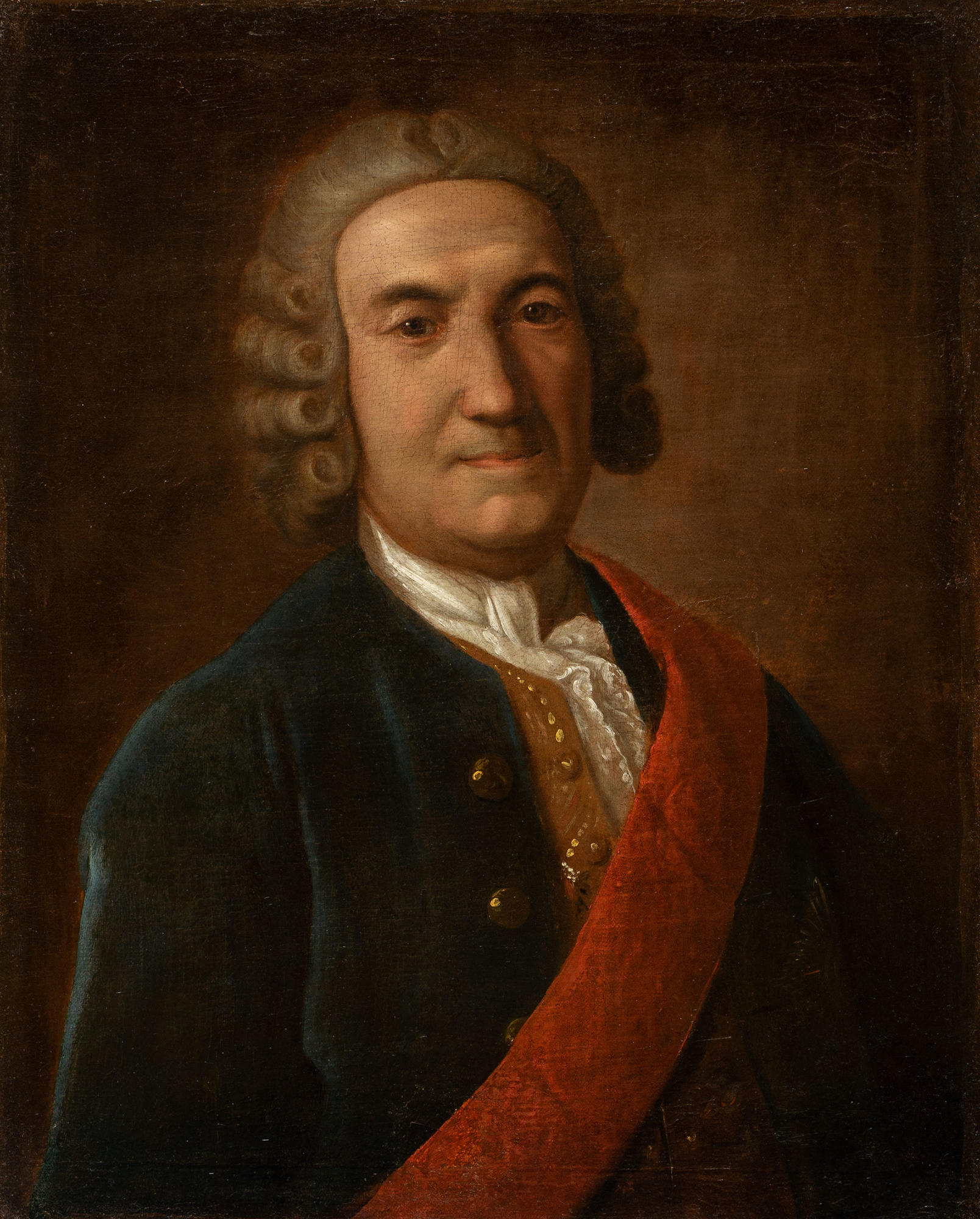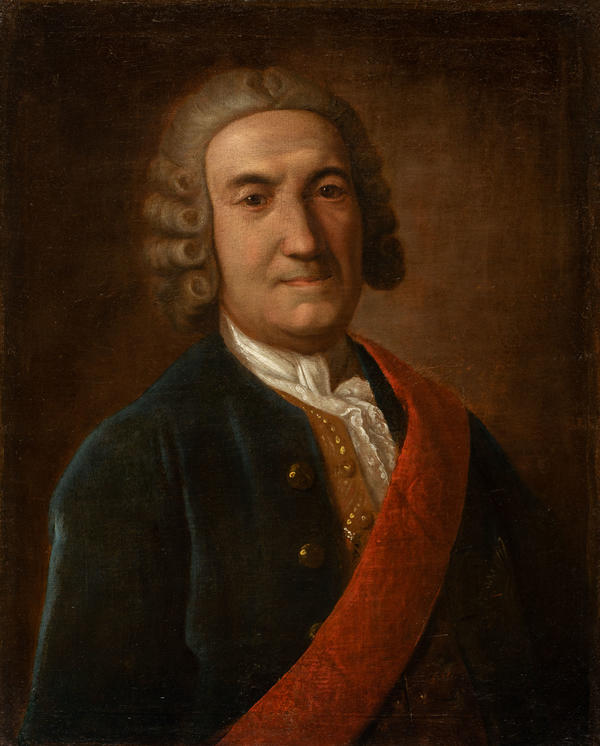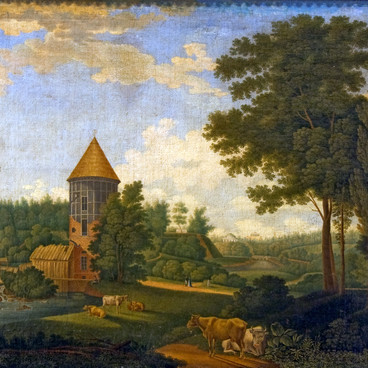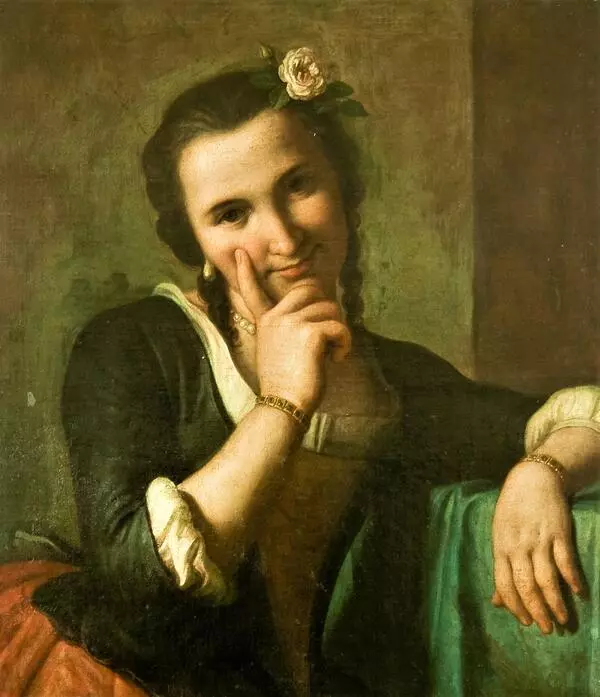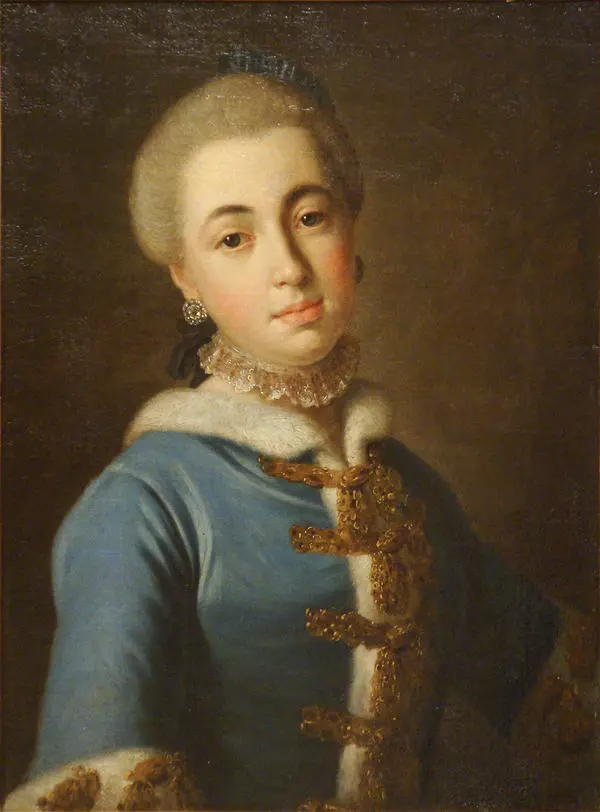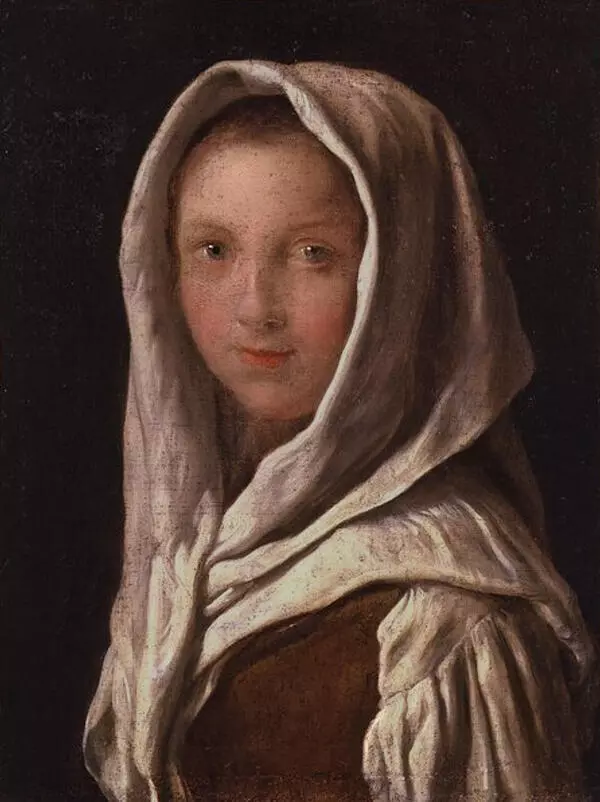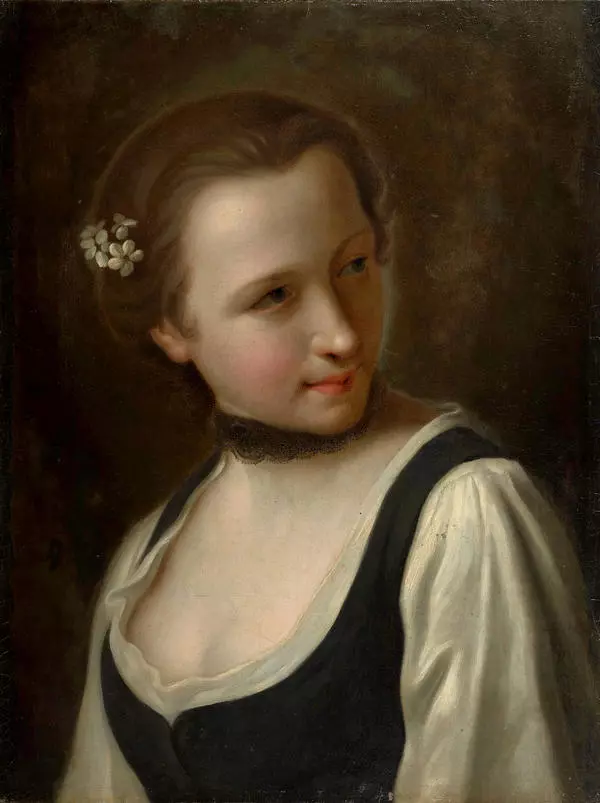The portrait of Count Franz Santi, the ancestor of Russian heraldry, was painted by Italian painter Pietro Rotari. The date of creation of the picture is unknown. The canvas is painted in the style of Classicism, it is a semi-ceremonial portrait, which was popular in the 18th – first quarter of the 19th century. In such portraits, they did not pay attention to the background, but costume details, on the contrary, were painted scrupulously.
#1
Rotari Pietro
Portrait of F.M. Santi
#2
#3
Classicist painting was characterized by the low perspective, as in this picture by Rotari. Because of this, viewers think that they are looking at the portrait from the bottom up. Franz Santi is painted in a fluffy powdered wig to the fashion of the mid-18th century. He is wearing a double-breasted waistcoat, from under which is peeking out a snow-white shirt with a bow. The dark green waistcoat of the tailcoat type is decorated with two rows of gilded buttons. On the count’s chest lies a bright red sash of the Order of St. Alexander Nevsky. It was one of the highest awards of the Russian Empire. The order itself is probably hidden under the waistcoat. It was a silver eight-pointed star with the following inscription: “For Services and Fatherland”.
#4
Count Franz Santi was born in 1683 in Piedmont, Italy. At a young age, he moved to France. In Paris, the count was educated in the field of genealogy. Santi served at the courts of various European sovereigns. In 1724, Russian Emperor Peter I invited him “to create heraldic art”. Franz Santi created the coat of arms of St. Petersburg and many other Russian cities. In the 1730s he was accused of a state conspiracy and exiled to Siberia. When the throne passed to the daughter of Peter I Elizabeth Petrovna, the Italian count regained his freedom. The empress appointed him chief master of ceremonies and elevated him to the rank of Active Privy Councillor.
#5
Pietro Rotari was born in 1707 in Verona, Italy. He studied painting under Italian masters. At home, the artist executed church wall painting. In 1750, Pietro Rotari moved to Vienna, and then to Munich. There he served as a court painter. Rotari painted religious, mythological and historical subjects.
#6
In 1756, Russian Empress Elizabeth Petrovna invited the Italian artist to St. Petersburg. He painted a large number of commissioned portraits of statesmen and court nobles. For his works, the Italian painter used rich dark colours; the colour palette of his portraits was muted. Until the end of his life in 1762, he worked at the imperial court and was engaged in teaching. His famous student was the artist Fyodor Rokotov. After Rotari’s death, Empress Catherine II bought from his widow all the paintings that remained in the artist’s workshop. By order of the empress, the works by the late court painter were placed in one of the halls of the Great Peterhof Palace. That room was called the Cabinet of Fashion and Grace.
читать дальшескрыть
00:00
00:00
1x
Portrait of F.M. Santi
Размер
46x59 cm
46х58.5 cm
46х58.5 cm
Техника
Oil on canvas
Выставка
5
Открыть в приложении
Поделиться
